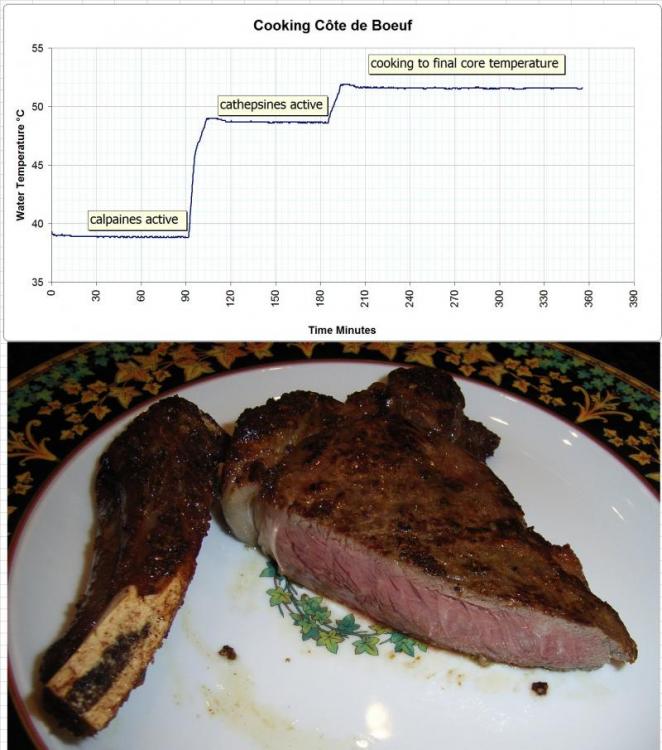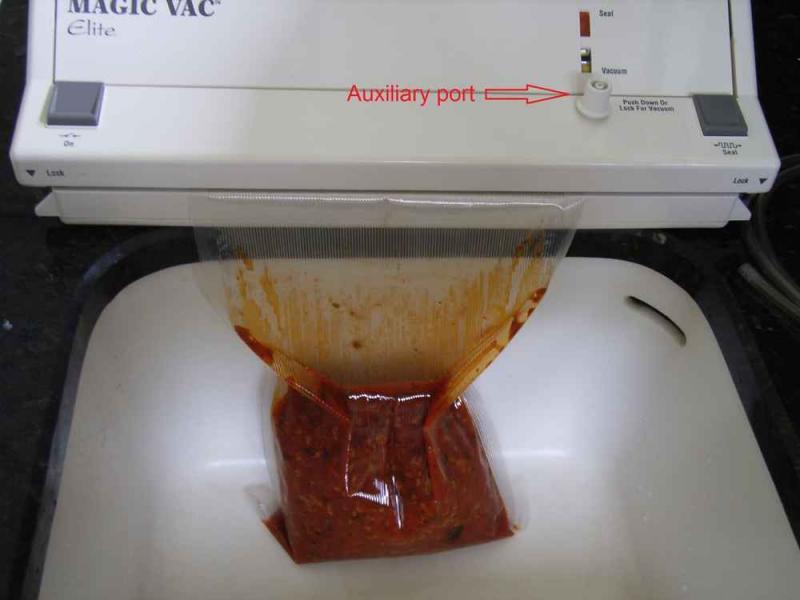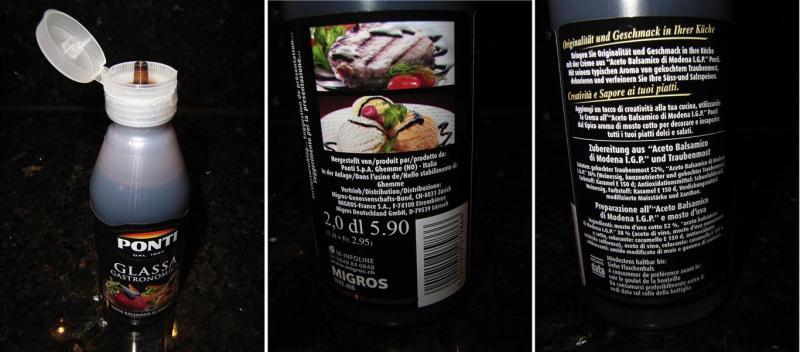-
Posts
518 -
Joined
-
Last visited
Content Type
Profiles
Forums
Store
Help Articles
Everything posted by PedroG
-

"Modernist Cuisine" by Myhrvold, Young & Bilet (Part 1)
PedroG replied to a topic in Cookbooks & References
Indeed - go to Amazon.ca - not sure how to make that an eG friendly link though. Amazon.com US$ 520.81 Amazon.ca CDN$ 394.10 (the link works, but I do not know if it IS eG-friendly) -
Hi Paul, welcome to eGullet! Very smart solution for 165$! Price and tinkering time are between the 75$ and the 232$ solutions (see also at getsatisfaction.com). In your detailed description you show your rig with a beverage cooler which is of course much better insulated than the stock-pot in your image above. Did you cut a notch in the lid to accomodate the heater and the cables, or how do you cover the bath to avoid evaporation in longtime cooking? With an uncovered bath you may easily evaporate 5 liters in 48 hours, see upthread. Happy cooking! Pedro
-
You find several links in my earlier post, or enter "immersion heater" into the search field and search "this topic", you will find several discussions. Merry Xmas. Pedro
-
I like larding very much, see an earlier post. It's fine with veal or beef prime rib! So if you can cut the fat into strips and have a larding needle at hand, DIY (before bagging and cooking). As SV meat is not very hot, always serve on warmed plates. You might post-sear the whole roast, slice for the first serving, (put the rest of the roast in a 55°C oven to await the second serving) and quickly sear every slice on both sides.
-
Quick note: I assumed in my cookbook, since it's for home cooks, that everything was purchased at a grocery store; that is, I assumed the beef was choice and wet-aged about 2 weeks. If you are using a well aged (say 28 day) prime-grade rib roast, then you'll probably only want to bring it up to temperature. If you did get it at the supermarket, then I think you'll want to go the 8--12 hours to tenderize it some. If your meat is not adequately aged, there are a few posts upthread on turbo-aging: http://forums.egullet.org/index.php?showtopic=116617&view=findpost&p=1002153 http://forums.egullet.org/index.php?showtopic=116617&view=findpost&p=1004143 http://forums.egullet.org/index.php?showtopic=116617&view=findpost&p=1656746 http://forums.egullet.org/index.php?showtopic=116617&view=findpost&p=1768046 Below is an example: The picture shows half the cut besides the bone. And I should have wiped the plate before taking the picture.
-
Having a brain cramp. LTLT???? Long time, low temp???? See article Sous vide cooked beef muscles: effects of low temperature–long time (LT–LT) treatments on their quality characteristics and storage stability
-
What sealer are you using? I know with the Foodsaver bags, the channels are on only one side, so I just make a point of serving that side down. Wrapping the marinated meat in cling film avoids the pattern on the surface; furthermore you do not need maximum vacuum (see Dave Arnold: vacuum machines affect the texture of your meat ), especially for fish and poultry you might even prefer ziploc-bags. If your clamp type vacuum sealer does not allow setting a reduced vacuum level, you may connect the adaptor of the tube you use to evacuate vacuum containers and close it only partly with your finger tip; this is especially helpful when bagging food with a lot of liquid: as soon as the liquid starts crawling up towards the sealing bar, you stop occluding the auxiliary port, allowing air to enter the system thus reducing the vacuum level. Verify that the seal is perfect, eventually apply a second and third seal.
-
Douglas Baldwin's book page 210-211 recommends 60°C/for 30-40 minutes (assuming your shrimps are not thicker than 20mm, this is pasteurizing conditions).
-
Reheating times depend on thickness, see Douglas Baldwin's tables. If primary heating was just to bring the food (tender meat) to temperature, reheating time is the same, in contrast to the case of primary LTLT cooking to tenderize tough meat. In LTLT cooking cook-chill-store-reheat makes sense. In the case of tender meat, reheating after refrigerating makes sense only for leftovers, not for in-advance-cooking. With very hot and very short searing, we miss the temperature and texture gradient of traditional cooking. I quit searing at 240°C (smoke point of rice bran oil is around 247°C) in favor of 180-200°C (temperature in the skillet measured with an infrared thermometer), resulting in a thicker overdone layer (maybe 3mm instead of 1mm).
-
See FOOD SAFETY HAZARDS AND CONTROLS FOR THE HOME FOOD PREPARER page 19-20. If you get your food below 40°F/4.4°C within 14 hours (USDA) you are on the safe side an may keep it refrigerated for 5 days.
-
So is it possible to leave any food portion vertically oriented with the standard grill? My understanding is that horizontal placement messes with the convection effect. Maybe you can make your bags stand vertically without a rack or skewer-suspension by using Ziploc bags, placing some glass beads or marbles or the like in the bottom of the bag and leaving a minimal amount of air which will collect opposite to the heavier marbles, i.e. below the zipper and keep the bag upright.
-
Sous Vide Thickness ruler revisited, post 3711 I was not satisfied by the stiffness of the cardboard I had at hand, now here's the final solution, sacrificing an old lever arch file: To download the PDF, follow the this link.
-
See upthread, 48h/55°C is fine, at 59.5°C somewhere between 24h and 36h may do.
-
HiRoller, did you read the turkey throw down ? Maybe a blowtorch instead of a broiler would do the job as well.
-
See some earlier posts: nickrey post 2419 (extracting osmazome) and posts 3198 to 3204 (usage of the gravy from LTLT cooking) and one of my favorite recipes (Brisket Stroganoff).
-
The original e-mail says: To our valued SousVide Supreme customers, As you have probably heard, we recently launched the SousVide Supreme Demi - the newest addition to our product line. The Demi is the smaller-sized version of the SousVide Supreme, making it the perfect holiday gift for friends and family. As one of our earliest customers, we would like thank you for your support and extend this very special exclusive offer... For 1 week only, you can purchase the SousVide Supreme Demi for only $199 using promo code DEMI199 during checkout at sousvidesupreme.com.
-
SousVideSupreme Demi for 199$ Promo Code DEMI199
-
1. I guess the "53°C" was a typo as 73°C minus the 15°C error yields 58°C. 2. 53°C/127.5°F is the growth limit of Clostridium perfringens, see FOOD PATHOGEN CONTROL DATA SUMMARY . 54.4°C/130°F is the limit for safe long-time cooking. See also FOOD SAFETY HAZARDS AND CONTROLS FOR THE HOME FOOD PREPARER . 3. Cooking at the minimal safe temperature requires reliable thermometer accuracy, see Thermometer calibration. I'd love to try this soon. I'm just wondering if there are any botulism concerns with cooking meat this long at a low temp? And would this 53c/48hr work for 1.5" pieces of beef shank? Thanks =)
-
Dan, thanks for doing all the tests! Trying 68°C will be a valuable service to the community to verify the theoretical expectation that above 60°C there should be no collagenase activity and below 70°C there should be poor/slow collagen melting. I never did something of which I expected a poor outcome. Thanks again!
-
Sounds like a sensor failure, so try another sensor. Some sensors survive submersion for years, a few fail after some time, as moisture creeping into the mantle-tube causes a short-circuit. Sensors may last longer if you take them out of the water when not in use.
-
It happened to me several times that LTLT cooked tough meat e.g. brisket 55°C/48h came out pink, fork-tender and succulent, but there was some bits of residual connective tissue that had not been gelatinized. Did anyone make the same experience? Is it thickness of the connective tissue that does not allow sufficient permeation of collagenase from the muscle cells? Would the same connective tissue be gelatinized thermally at braising temperatures? Or are there parts of the connective tissue too rich in elastin which will not be gelatinized neither enzymatically nor thermally?
-
I've done balsamico reduction repeatedly, just using a flat skillet on the stove, no PID-controller; evaporation cooling by the large surface will limit liquid temperature. Using a digital scale with a SS top will allow you to scale the hot pan repeatedly to check when you have arrived at 33% or 25% of the original weight. A syringe with a blunt cannula will make garnishing easy, see insalata Caprese. Here is a much simpler solution: glassa gastronomica at CHF 5.90/200ml and the bottle has a practical nozzle obviating the need of a syringe and cannula. I guess in the US there is a similar product.
-
If you like well-done meat as in traditional braising, you may just braise, try to stay below 80°C, or you may SV at 77-78°C for 6-12 hours as e.g. in my recipe Ossobuco sous vide*. If you prefer your meat pink, optimal results are in fact below 60°C. Cooking times for tenderizing tough meat at 55°C do not depend on weight or thickness, it's some trial and error and a few hours more or less will make little or no difference, so LTLT cooking times could as well be indicated as 12 hours or 1 or 2 or 3 days. BTW 55°C is the lowest safe temperature for long-time cooking, allowing a margin of error for imperfect thermometer calibration and imperfect water bath temperature stability. I have not done cheek so far. My experience with veal breast and veal shoulder is fine with 55°C/24h; 48h is too much, falling apart. *My last 2 ossobucos (veal shanks) were 58.5°C/26.5h and 55°C/28h respectively, and both were fork-tender and succulent, and the bone marrow was perfectly soft; earlier I had equal results with 58.5°C/12h. A trick with veal shanks is to cut the surrounding fascia in several places so when shrinking it will not buckle the meat. With beef (brisket and shoulder) 55°C/48h is fine; if there are very thick tendons you might go for 72h, as collagenase sits in the sarcoplasm (the cytoplasm of muscle cells) and has a long way to travel into thick tendons; sometimes I have had incompletely gelatinized connective tissue at 48h. Beef diaphragm (hanger or skirt) may be fine at 55°C/24h. With pork shoulder I tested 55°C / 24-48-72h. 72h was the most tender one, but the lean parts of the meat were rather dry; 24h and 48h were tender but not fork-tender. I did pork spare ribs once 56°C / 68h, they came out fork-tender and falling-apart, succulent, but might have been a bit juicier, next time I would try 48h only. For tender meat you just have to bring the core to the desired temperature, time depends on thickness (not weight), see Douglas Baldwin's tables or my thickness-ruler which contains a condensate of Douglas' tables. (Thanks, Douglas, for all the work you have done for our community!). Pedro
-
Montreal, welcome to eGullet and the Sous Vide Topic! When cooking tough meat rich in collagen, like cheeks, you want to gelatinize the collagen. This can be done enzymatically by collagenase at temperatures below 60°C, as collagenase gets inactivated above 60°C. A typical temperature/time combo is 55°C for 24-72 hours (24 hours rather for veal, longer time for beef and pork), yielding fork-tender and succulent meat, pink throughout like a tenderloin steak. Above 70°C collagen will non-enzymatically dissolve to gelatin, but above 80°C meat starts to be turned into shoe leather or cardboard, so the best temperature is slightly below 80°C to dissolve collagen within a few hours; btw this is the same as traditional braising, and the meat will be falling-apart tender and succulent, but of course well-done. Cooking at temperatures between 60-70°C is of no value, as collagen has not been enzymatically degraded and will start shrinking at 60°C, squeezing juice out of the meat. All tenderizing reactions get faster with rising temperature, but enzymatic reactions only up to the point where the enzymes are inactivated (calpain at ≈40°C, cathepsin at ≈50°C, and collagenase at ≈60°C). Similar to Harold McGee's braising method which I quoted upthread you might cook in steps, e.g. 1-2 hrs. at 39°C (calpain most active, "turbo-aging"), then 1-2 hrs. at 49°C (cathepsin most active, continued "turbo-aging"), and finally at 55°C (collagenase active, doneness medium-rare) or 78°C (thermal dissolving of collagen, doneness well-done). In Sous Vide cookbooks recommended temperatures are mostly far too high, I suppose for legal reasons. Recommendations by Douglas Baldwin in his Practical Guide and in his cookbook are far more realistic, and I guess so will be Nathan Myhrvold's recommendations in his 6-volume-book to be released in March 2011. P.S. As "turbo-aging" is well in the more dangerous upper half of the danger zone, it should not exceed 4 hours and be followed by cooking to pasteurizing conditions according to table 5.8 in Douglas Baldwin's Practical Guide.
-
Avoidig change of flavor in redistilling will not be trivial. Adding an adequate amount of pure 96% alcohol is simpler. Maybe dehydration in a desiccator over phosphorus pentoxide would do the job, applying only weak vacuum to avoid distilling off the alcohol.





